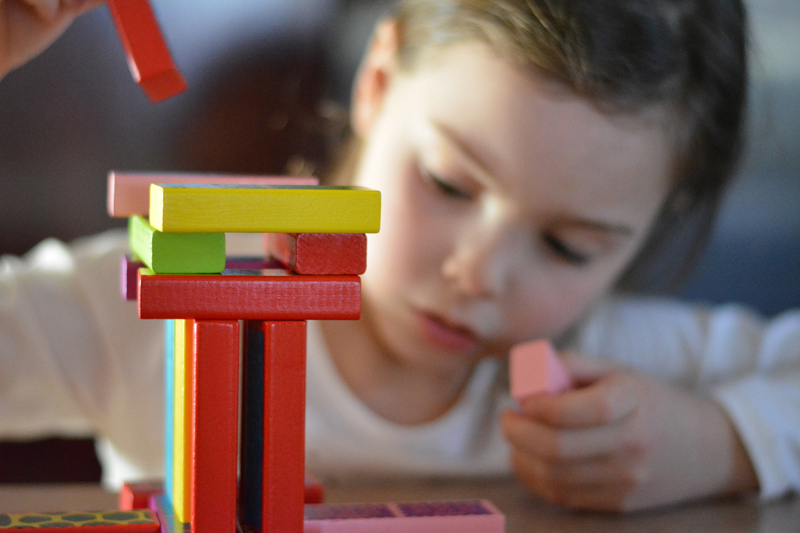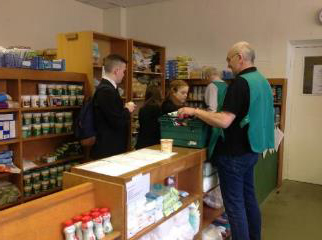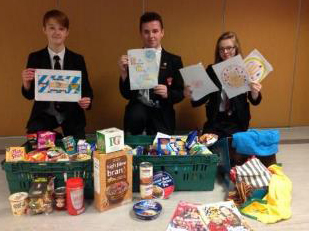Whatever young people's educational journeys, as individuals they all have unique personal characteristics just like their physical fingerprints and DNA sequences. An exciting paradigm shift is taking place in education as approaches to teaching and learning become increasingly creative and student-centred, enabling all learners to develop and blossom in their own, special ways.
Just as forensic investigators can identify an individual using DNA (Deoxyribonucleic Acid) to create a genetic profile - a set of numeric values that is exclusive to that person - educators can understand their students by the acid test of their academic attainment and exam outcomes. But looking at test scores is just one part of a child’s personal and social DNA. There are other enlightening elements of the learner’s profile to take into account, such as each individual’s disposition, passions, interests, talents and values. These may not shape league tables, but teaching to this profile can better prepare learners for the modern world.
Education is on the move
As Albert Einstein said, “The world as we have created it, is a process of our thinking. It cannot be changed without changing our thinking.”
Sir Ken Robinson is acutely aware of changes needed and the importance of motivation that is conducive to every single young citizen flourishing. As he says:
“Human resources are like natural resources; they're often buried deep. You have to go looking for them; they're not just lying around on the surface. You have to create the circumstances where they show themselves.”
“The fact is that given the challenges we face, education doesn't need to be reformed - it needs to be transformed. The key to this transformation is not to standardise education, but to personalise it, to build achievement on discovering the individual talents of each child, to put students in an environment where they want to learn and where they can naturally discover their true passions.”

Character development and values
For some time, concern has been growing about whether the education of the current emerging generation of citizens is sufficiently fit for purpose. This is especially bearing in mind the state of the health and wellbeing of so many young people, degradation of the environment, the world they are inheriting, the pace at which various aspects of daily life are evolving, and the qualities needed for the new world of work.
In 2017, the Dame Kelly Holmes Trust held a series of roundtable discussions with a large cross-section of people from politics, education and the youth sector in the UK to address the significance of character development, viewed as an important yet often overlooked part of education today. Countless stakeholders involved in how children are growing up consider that young people need to be better equipped with the tools and skills that enable them to live positive lives. Assisting them in developing strong character traits will support improved academic attainment, employment prospects, workplace productivity and individuals’ contributions to society.
Following this roundtable, in July 2018 a white paper was published: The Opportunities and Challenges offered by Character Education. The first recommendation is that the Department for Education takes the lead in establishing a clear definition for character development and that it should then be applied across Government and communicated effectively to education, business, community and youth-sector organisations.
It is proposed that character development is defined as: when people align their actions with their considered values.
Values define who we are
Just as a DNA profile is extracted from a piece of evidence from the subject, so several aspects of someone’s makeup can be discerned from personally chosen values. This is because our values help to identify what we hold dear, what we consider important, what motivates us and what we prioritise. Together with our beliefs, they are the causal factors that drive our thinking, decision-making and behaviour.
“Creativity is intelligence having fun”
Since character development is key to young citizens flourishing, maximising their potential and living healthy, fulfilling lives of meaning and purpose, what is important now is that time is invested in it as an integral part of each child’s education.
Spiritual, Moral, Social and Cultural (SMSC) development, Personal, Social, Health and Economic (PSHE) education and Citizenship are stepping stones in the right direction but, fundamental to all this progress is quality, systematic values education. To provide clarity and properly reflect each young person’s uniqueness, all learners need regular opportunities to explore and apply values so as to establish for themselves a foundation of ones that feel right and that will be their daily reference points, particularly as they navigate the plethora of challenges they currently face and that they will encounter as their lives and the future unfold.
Educators have the opportunity to creatively embed an awareness of values and their influence on life at home, in school and in wider contexts. In doing so, they will witness the delight shown by the children as they apply the empowering competencies gained and draw on newly acquired capacities that express their own uniqueness. The stimulating process excites curiosity and engenders a general improvement in wellbeing and an eagerness to learn. The exhilarating feeling of authenticity rises as the participants build up their confidence and learn to align their deliberations, choices and actions with their own, personally selected values.
Want to receive cutting-edge insights from leading educators each week? Sign up to our Community Update and be part of the action!
Online and in print, there is a lot of idealising about nurturing niceness and educating ‘the whole child’. But at the sharp edge in schools, when teachers are busy and pressured to provide results (test scores that is), what can realistically happen? Values and ethics reduced to a snappy slogan on the walls of the hall? Positive characteristics and traits referred to in a school mission statement but never in lessons? Sanctions imposed for negative behaviours but little recognition for positive? Rewards reserved for classwork and achievement?
In the same way that children need to be taught how to hold a knife and fork, tie shoelaces or do long division, so too are empathy, kindness, benevolence and charity traits that need to be taught. Yet where do we reward students for being kind and not just clever? Where do we praise schools for educating hearts and not just minds?
When asked “What is education for?”, the answer “passing tests” is not always at the top of list. Instead, teachers often cite ‘holistic outcomes’, citizenship development and rich understanding of knowledge in context - not just a list of rote-learned facts - as key ambitions.
But there is little reward for schools or students who achieve these holistic aims. Although evidence of healthy SMSC and British Values provision contributes to an inspection outcome, Ofsted’s criteria largely hang on exam results. Progress 8 looks at points from qualifications. SATs tests define a child’s Primary school achievements. Teacher assessment and reporting to parents leans heavily on levels.
How can we turn this system on its head? By innovating our routines and protocols. Happy children achieve more, kindness breeds kindness. Although ‘behaviour’ can be a key concern in school development plans, there is a difference between students not being naughty and being actively kind.

One method I’ve implemented had me standing up to present an assembly in front of Years 7, 8 and 9, playing a YouTube video called ‘random acts of kindness’ and then challenging students to conduct their own over the six-week half term. Media Studies students also created a video to show in form time.
The next half term we went a step further. On the first Monday back after the holidays, the school council and I went into school two hours early in order to (in the words of executive principal Dave Whittaker) “batter the school with kindness”. ‘Thank you’ notes left for cleaners and caretakers. Flowers in the reception. Fifty pence pieces sellotaped to the vendors, sweeties left in the staffroom, compliments stuck to windows. Free umbrellas for the rain, new pencil cases for the new starters, ‘you’re the best’ badges for the dinner ladies. Balloons dropped off at the nursery, handing Murray Mints to the arriving bus drivers, and a car cleaning service offered in the car park. The list was extensive, and I’ve forgotten a few I’m sure, but the buzz was tangible.
With the school council driving the agenda, students let their imaginations run wild with the kindness drive. A school charity was formed - ‘The Helping Hand’ - and projects dreamed up. Age UK and Yorkshire Air Ambulance visited the school, collections and visits to local food banks were run... It was a beautiful blooming of positive deeds, and served to remind staff and students: ‘It’s nice to be nice’.
Other projects/ideas to promote kindness in schools:
The results were striking. There were 100s of recorded and rewarded acts of kindness. Students could see them, staff could see them, and we could all feel them.

Here are just some acts of kindness by students recorded by staff over two half terms [this is a fraction of the acts Paul sent in! - Editor]:
Where is the kindness in your curriculum? Make this year the year to be nice. World Kindness Day is November 13th 2018, and Random Acts of Kindness days can be run throughout the year, so get planning!
Want to receive cutting-edge insights from leading educators each week? Sign up to our Community Update and be part of the action!
There is an abundance of initiatives helping to ensure that young citizens-in-the-making go on to a future beneficial for all living things. To help identify some of the exciting avenues that are opening up, here is a table with nine facets of education, and some critical thinking prompts, that could typify what forward-thinkers have been endeavouring to bring to fruition:
With the aim for the UAE to be #1 in the Global Innovation Index by the year 2021, it is hardly surprising that there is a heavy focus on innovation as part of the nation’s school inspection framework. However, as with most buzzwords, the term “innovation” has become somewhat debased. Even among experts the term is fiercely debated. This ambiguity leaves the average teacher with a quandary: they are being expected to increase the level of innovation in their practice, as well as helping foster innovation amongst their students, all the while being unclear of exactly what they are working towards.
I’ve always seen teaching as fun, inspirational and aspirational. Don’t get me wrong, there have been doubts and difficulties at times in my career, but even on the tough days I can honestly say that I’ve never had a dull moment. The level of creativity needed in teaching and leading a school community is driven by an insatiable passion for the people you serve. You want the best for them, and this absolute belief has stayed with me throughout my career.
At the third national #WomenEd unconference in Sheffield, Amy Jeetley spoke about how brilliant teachers don’t always make brilliant leaders. I absolutely agree, and would say that although the skills are in some ways related (getting the best from the students you teach/getting the best from the colleagues you lead), leadership demands something specific from us. Working with and through other adults is a challenge of a different nature to being an excellent classroom practitioner. So what is it that DOES make for effective educational leadership at all levels (middle leadership, senior leadership, headship, executive headship), and what are the tools every leader needs to have in their toolkit and draw on?
Teachers and pupils alike are set to be inspired by the Olympic and Paralympic Values with the launch of the Values Awards from Get Set, the official youth engagement programme of the British Olympic Association and British Paralympic Association. This initiative is building on the success of Get Set for Community Action, which empowered more than 18,000 young people to make real changes within their community Students aged between seven and 19 have until 2nd February 2018 to enter.

A community-driven platform for showcasing the latest innovations and voices in schools
Pioneer House
North Road
Ellesmere Port
CH65 1AD
United Kingdom